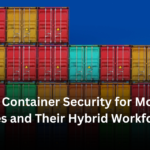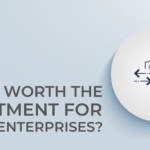Organizations, irrespective of their sizes today need multiple vendors and suppliers to function and carry out different aspects of the business. While this eases the business continuity, it becomes a daunting task for the companies to manage and protect their cyber assets and meet compliance/regulations.
Having proper vendor management will not only help in preventing data breaches but also becomes a key part of regulatory compliance. Here are the 7 best practices that organizations can follow for effective vendor risk management:
1. Carry Out Vendor Risk Assessment
Managing multiple vendors with different capabilities is a challenge for businesses. Categorizing them allows us to review the hierarchy and lets us foresee the threats posed by each of them. So every organization has to spend time and effort in understanding each vendor before onboarding them to evaluate the risks involved.
2. Evaluate Vendor Performance Metrics
If you are planning to work with a vendor, it is a good practice to define the Key Performance Indicators (KPIs) beforehand and educate the vendors about the security measures taken. This also enables the organizations to set standards and expectations straight with vendors even before working with them.
3. Do Vendor Contracts
Even though the expectations are lied out forefront, it is always a good practice to have clear signed contracts with the vendor before working. This allows to clearly define individual responsibilities and get assurance that the regulations are followed by both the vendor and internal teams.
4. Evaluate Fourth-Party Vendors
Cybersecurity risks doesn’t stop with third-party vendors. There is a chance that your vendors might have vendors. These vendors pose threat as well. It is always a good practice to review and evaluate the fourth-party vendors so that you are aware of the security risks involved in signing with your vendor.
5. Vendor Governance Framework
Vendor governance framework is basically a strategy that organizations plan to get more value from their vendors by controlling costs, increasing value and mitigating risk. This not only helps the organization plan and work better but enables them to make informed and better decisions.
6. Have Periodic Vendor Auditing
Even with compliances met, it is always a good practice for organizations to carry out periodic auditing with their vendors in order to ensure that all the regulations are met. In addition, this also enables organizations to check on their security posture and improve based on the findings.
7. Access Control Management
With work from home and BYOD set up in many companies, there is a high chance that your employees in your vendor’s organization might be working from remote locations and with different devices. This poses a huge security risk for your organization and also makes it difficult to manage data flow. Implementing an access control management tool will help in addressing key security threats and ensuring the proper data flow.
Managing one’s cybersecurity posture is hard when there are external entities involved, ensuring that effective security measures are implemented becomes a challenge for organizations. With effective vendor risk management, it becomes easy to attest, assure and ensure that the organizations are in safe hands.
If you are looking for an effective Access Control Management Platform to monitor and have a clear view of your organization’s digital assets, you can consider CACHATTO. It helps organizations to collaborate with vendors in a simple, productive and flexible manner without having to worry about their data or infrastructure security.
Learn more about the features and use cases from here – https://www.cachatto.in/product/





